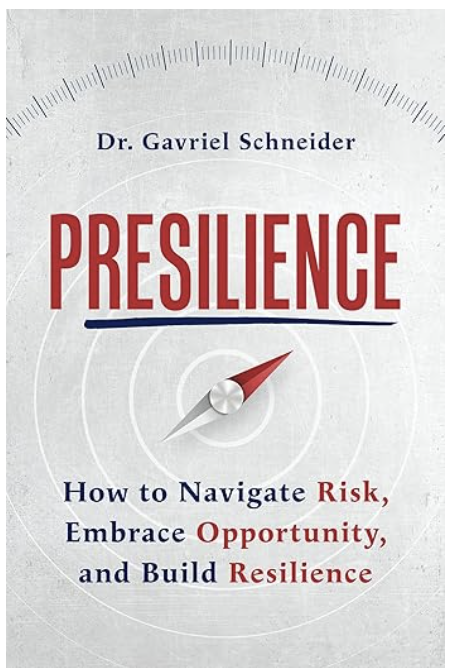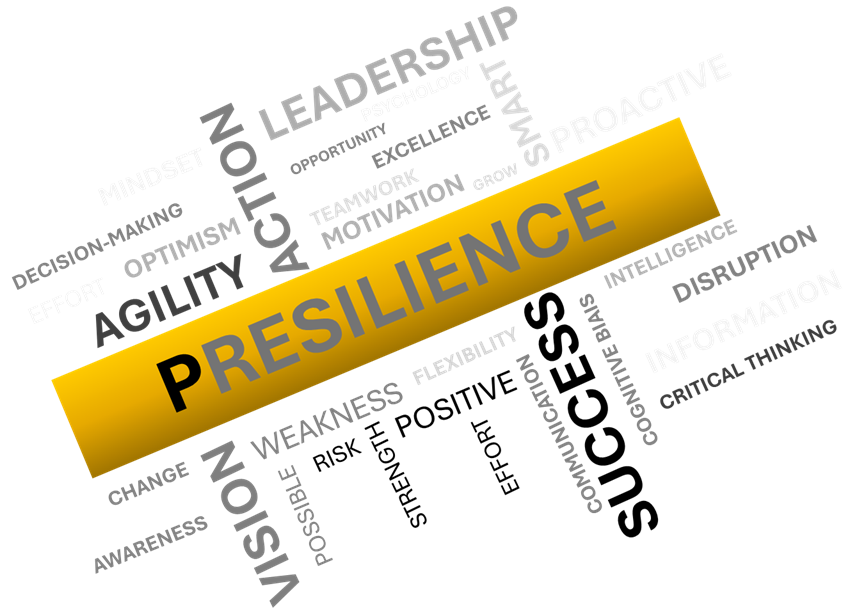In today’s fast-paced, unpredictable world, the ability to navigate uncertainty and adapt to change is more important than ever. Whether in business, personal life, or society at large, challenges and disruptions are inevitable. But what if we could do more than just survive these challenges? What if we could thrive through them, turning risks into opportunities and building a future that is not only resilient but also proactive? This is the essence of Presilience—a transformative concept that combines strategic foresight, proactive risk management, and resilience to empower individuals and organizations to excel in the face of uncertainty.
What is Presilience?
Presilience is a forward-thinking approach to risk and resilience. It’s about preparing for the future, preventing problems before they occur, and positioning yourself to capitalize on emerging opportunities. Unlike traditional risk management, which often focuses on reactive measures, Presilience emphasizes proactive preparation and opportunity centrism—the ability to look beyond immediate challenges and see how they can be leveraged for growth and development.
At its core, Presilience is a mindset and methodology that encourages us to anticipate changes, adapt strategies, and thrive amid constant flux. It’s about turning uncertainty into a strategic advantage, enabling us to not only endure disruptions but also actively shape our path toward success.
The Key Components of Presilience
Presilience is built on several foundational principles and practices that work together to create a comprehensive framework for navigating uncertainty:
1. Risk Intelligence
Risk Intelligence is the cornerstone of Presilience. It involves understanding and managing uncertainty, assessing potential threats and opportunities, and making informed decisions. Key elements of Risk Intelligence include:
- Risk Appetite: How much risk you’re willing to take to achieve your objectives.
- Risk Tolerance: How much risk you can endure without derailing your plans.
- Dynamic Risk Equilibrium: Balancing flexibility and stability to adapt to changing environments.
2. Proactive Decision-Making
Presilience shifts decision-making from reactive to proactive. Using frameworks like the OODA loop (Observe, Orient, Decide, Act), individuals and organizations can anticipate changes, adapt strategies, and act decisively. This approach emphasizes critical thinking, situational awareness, and the ability to make timely, informed decisions.
3. Opportunity Centrism
Presilience encourages us to focus on the positives in every situation. By adopting an opportunity-centric mindset, we can identify potential benefits in challenges and disruptions, turning risks into avenues for growth and innovation.
4. Integrated Risk Management
Presilience incorporates situational awareness, critical thinking, communication, and continuous improvement. It’s about creating a culture that rewards proactive risk assessment and innovation while maintaining resilience during disruptions.
5. Mindset and Psychology
Understanding and leveraging psychology is crucial for Presilience. By managing cognitive biases, fostering intrinsic motivation, and developing emotional resilience, individuals and teams can navigate uncertainty more effectively.
The Seven P’s Framework
Presilience encourages self-awareness and proactive risk management through the Seven P’s framework. This framework helps individuals assess their risk profile and make informed decisions:
- People: Evaluate your social and professional networks for support and risks.
- Places: Assess physical and digital environments for potential threats.
- Personality: Understand how your traits influence risk exposure.
- Prejudices: Manage biases to improve interactions and decision-making.
- Personal History: Learn from past experiences to guide future actions.
- Political and Religious Views: Navigate contentious environments wisely.
- Private Lifestyle: Align personal habits with public perception to minimize vulnerabilities.
Practical Applications of Presilience
Presilience is not just a theoretical concept—it’s a practical approach that can be applied in various aspects of life and work. Here are some ways to integrate Presilience into your daily practices:
1. Goal Setting
Presilience redefines SMART goals (Specific, Measurable, Achievable, Relevant, Time-bound) by integrating flexibility, adaptability, and continuous learning. Goals should not only aim for resilience but also proactively prepare for and capitalize on opportunities. For example:
- Specific: Define clear, actionable goals that anticipate challenges and opportunities.
- Measurable: Track the effectiveness of proactive strategies and early warning systems.
- Achievable: Stretch your capabilities without overreaching.
- Relevant: Align goals with your broader mission and the realities of your environment.
- Time-Bound: Include timelines for preparation, monitoring, and adaptation.
2. Managing Information Overload
In a world of endless data, Presilience emphasizes selective attention, critical analysis, and systematic approaches to filter noise and focus on what truly matters. Techniques include:
- Filtering irrelevant information.
- Practicing critical thinking to evaluate data.
- Using structured processes for information management.
3. Leadership and Teamwork
Presilience fosters a culture of collaboration, aligning individual and organizational goals. Leaders inspire teams to anticipate changes, adapt strategies, and thrive in uncertainty. Key leadership principles include:
- Building trust and rapport.
- Encouraging proactive risk assessment.
- Aligning team goals with organizational values.
4. Personal Development
Presilience is a journey of self-improvement. It involves building situational awareness, critical thinking, decision-making, and resilience while leveraging psychological, neurological, and physiological tools. Steps include:
- Enhancing emotional intelligence.
- Managing stress and fear.
- Developing a growth mindset.
Why Presilience Matters
Presilience is not just about surviving challenges—it’s about thriving through them. By embracing this philosophy, individuals and organizations can transform risks into opportunities, innovate in the face of uncertainty, and achieve sustained success in a volatile world. Whether you’re navigating a business crisis, planning for personal growth, or adapting to societal changes, Presilience provides the tools and mindset needed to excel.
Final Thoughts
Presilience is a holistic approach to navigating life’s complexities. It combines proactive preparation, strategic thinking, and resilience to empower individuals and organizations to turn uncertainty into a competitive advantage. By integrating Presilience into your personal and professional life, you cannot only endure challenges but also actively shape your path toward growth, success, and fulfillment.
As Confucius wisely said, “I hear and I forget. I see and I remember. I do and I understand.” Presilience is about doing—taking action to understand, adapt, and thrive in an ever-changing world.
So, whether you’re an entrepreneur, a leader, or simply someone looking to navigate life’s uncertainties more effectively, Presilience offers a powerful framework for turning risks into opportunities and building a future that is not only resilient but also proactive. It’s time to embrace Presilience and start thriving in the face of uncertainty!
To get more in details into presilience, we recommand that you read Gavriel Schneider’s book






